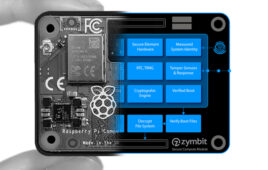A team of researchers from Korea Advanced Institute of Science and Technology, Harvard University and Korea Research Institute of Chemical Technology has developed a way to make batteries in almost any shape that can be imagined. In their paper published in the journal ACS Nano, the researchers describe the process used to make the batteries and the device they created to prove the concept sound.
The shapes of many small devices are constrained by the limits of battery shape—smart watches, for example. Small batteries are typically coin-shaped, rectangular, cylindrical or pouch-shaped. The researchers with this new effort developed a new way to make a battery that could be almost any shape a product manufacturer could design.
The researchers report that they chose zinc-ion batteries because they can be used safely in the open air—this is because they make use of water-based electrolytes. They looked at manufacturing methods used for various products, searching for techniques to make battery components in different shapes. For the cathode, they found that electrospinning allowed batteries to be cut into a desired shape. For some other parts, they used micromachining. For packaging, they used stereolithography. The electrical connections were produced using a 3-D printer. They put all their ideas together and produced some batteries in the shape of letters, rings and circles.
To test their ideas, the researchers created a battery that could be used to power a light sensor affixed to a ring worn on the finger. By successfully demonstrating such a device, the team showed that their ideas were sound. They note that the same process could be used to create other novel devices, and that other options are also available, such as using zinc-manganese batteries to power a graphene supercapacitor.
The researchers also note that the designer batteries they created can be discharged very quickly—and can be fully charged in just a few minutes. They suggest their batteries could be used in such applications as implantable or wearable devices and other novel products.
Filed Under: Product design




